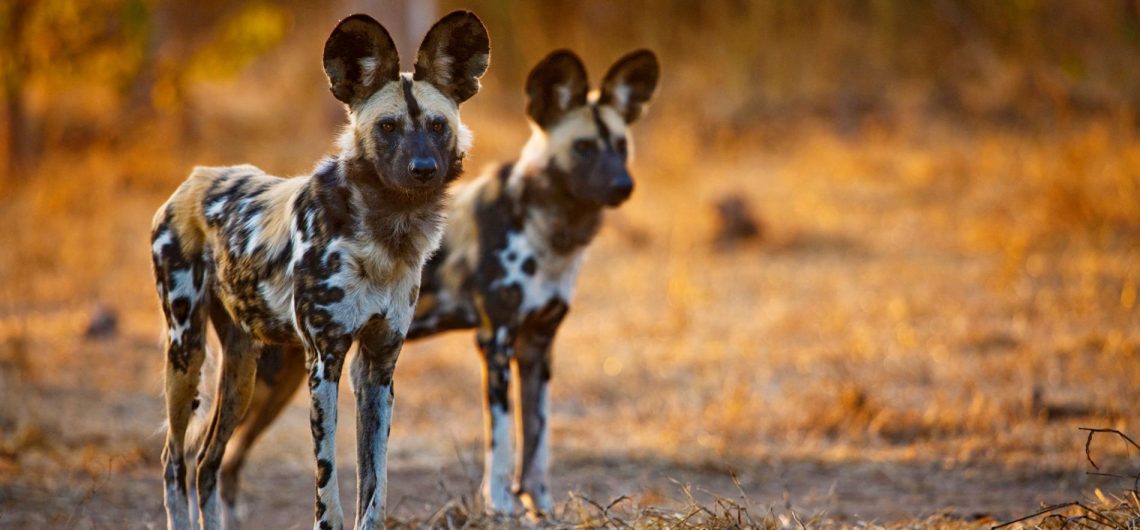1: African Wild Dogs and Domestic Dogs Cannot Interbreed
African Wild Dogs Cannot be domesticated, unlike home dogs. Both species descended from wolves but they cannot be interbred. Cosmetically they might look the same and in appearance but it is not possible to produce an offspring. African Wild Dogs have long legs, four toes on each of their front feet and large, rounded ears which help them hear vocalisations from other dogs from far away.
2: Wild dogs are classified as endangered.
African Wild Dogs are classified as endangered species by the IUCN (International Union for the Conservation of Nature) due to the high decrease of their population.
The main threat facing the Wild Dogs is habitat loss, larger predators like wild big cats and humans especially farmers who kill them including poachers who set up illegal traps and snares meant to catch them or other wild animals. Also other dogs pass on transmittable diseases to the wild dogs.
3: African Wild dogs live in tightly knit social groups
Wild Dogs of Africa are social animals that live in packs of between two and 40 individuals. They share a strong bond and even take care of other injured wild dogs by nursing them and fetching food for them food until recovery or death.
4: The female wild dog can give birth to up-to 10 puppies
Naturally a wild dog society is headed by, only the alpha male and dominant female that are the only ones allowed to breed while other adults help rear the pups. The average wild dog litter consists of 10 puppies and it is the highest number of any kind of the dog family (canid).
5: African Wild Dogs have the highest hunting success rate of any predator
What African Wild Dogs lack in size, they make up for in the hunting skills. Even though they might be smaller in terms of size and weight than the big cats that consist of the lion, cheetah and leopards, wild dogs have a higher success rate when it comes to hunting and killing prey. They usually hunt very early in the morning and late in the evening, they work as a team and can bring down much larger animals e.g antelope, zebra and wildebeest.
6: African Wild Dogs Stand Out due to distinctive markings
The wild dog’s are identified by their short fur which is in yellow, gray, white and black patches on its skin. The markings and colourations, are unique to these wild dogs only making it easy for conservationists to identify individuals.
Much like the Zebras, the African wild dogs’ coloration acts much like a fingerprint, and every wild dog has its unique makings
7: African wild Dogs Do no Bark
A wild dog’s vocalisations is more advanced than that of a domestic dog. They can greet each other with whining and twittering sounds.It has been observed that when one African Wild Dog has lots its way, it will make an owl-like “hoo” call to find the pack.
8: African Wild Dogs are Long Distance Runners
African Wild dogs can run more than 44 miles or 71 kilometers per hour and roam across large areas of more than 770 square miles (1994 sq km). When they take care of the young ones, they tend to stick closer to their dens and territories.
9: The African wild dog has many Names and Aliases
African Wild Dogs have a few other names, including “cape hunting dog” and “painted hunting dog.”
![]()


Comments